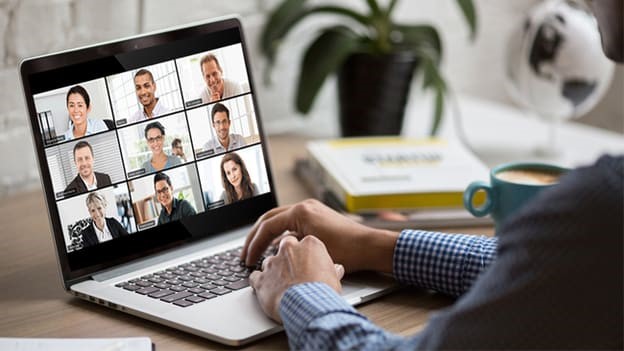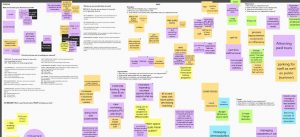
Today’s Buzz is by Greg Stopka (Twitter and LinkedIn)
What I’m watching: Might Ducks Game Changers on Disney+
What I am listening to: Commentary on the Bears drafting Justin Fields
What I’m playing: Fantasy Baseball
What I’m doing: Staining my shed
At the Park District of Oak Park, we are currently engaging staff in a conversation around what changes we have made due to COVID and which ones should stick around in the future. The questions we plan to ask include:
- Observation/Fact:
- What process/projects did we add, get rid of, or change as a result of COVID-19?
- Reflective/Feeling
- Thinking about the above…
- What were you happy about?
- What were you upset about?
- How do you feel the change affected the community, staff, or your team
- Thinking about the above…
- Interpretative/Implication/Ideas
- Thinking about the above…
- What COVID-19 changes do you want to keep, what do you want to get rid of, and what do you want to add?
- What would be the most beneficial?
- What would have the strongest impact?
- Thinking about the above…
- Decision/Results
- Where do we go from here?
- What are the next steps to make a permanent change?
- What’s the timeline to make a change?
I’ve been asking myself these questions as well in my role at the Park District and as chair of nextERA for the Alliance for Innovation. Here are the key lessons I’m taking from COVID-19.
Connections before Content
When COVID hit all our nextERA and Innovation Team meetings stopped as the pandemic took hold. A few months in, there was still a feeling that it was not time to return to business as usual. After reaching out to the two groups I lead, I decided to hold check-in lunches to hear what is going on and generally connect with each other with no agenda. While we eventually returned to traditional meetings, the time spent connecting with my peers helped build the relationships between us. To keep those connections growing we hold a 15-minute icebreaker at the beginning of meetings. Last week, I had the Innovation Team share something in their office or home. It created an opportunity for us to learn more about each other’s families.
- Lesson Learned: Focus on connections before content. By spending meaningful time with each other we can better relate to one another and improve the work done.
Mural/JamBoard
As a facilitator, I went through withdrawals without live meetings. There was no need for white pad paper, sharpies, or post-it notes. But the need for important conversations exists, pandemic or no pandemic, and new virtual facilitation tools appeared during COVID

-19 which allowed us to adapt strategic meetings to a virtual platform.
Mural and Jam Board allowed us to share ideas with virtual post-its, images, and collaborate around problems. This year we are working on building our 2022-2024 strategic plan for the agency. We have been able to engage staff just as effectively with mural and zoom breakout rooms to gather ideas. There are even tools to prioritize ideas. Although I miss the energy from live meetings, tools like Mural and Jam Board have created tools that no longer make meeting in-person a necessity to do the work of local government. In fact, with chat in Zoom, you can gather ideas even more efficiently than with post-it notes and discussion.
- Lesson Learned: You don’t always have to get together in person to have an effective, strategic conversation; consider whether meeting in-person is needed or if a virtual meeting would be just as effective.
Creating Meaningful Connections/Relationships around Content
After 2020 wiped out our meetings, we sought to rebuild our nextERA meetings. Instead of focusing on business, we came up with a new concept called Innovation Storytelling where a member shared a story about the true work of innovation. Our goal was not to share about how awesome things are in our communities, but the difficulties, pain points, and challenges with building an innovative culture in local government. Some of us have called the sessions “innovation therapy.” Topics have included an FBI investigation, lack of support for innovation from staff, innovation seen as “other work”, the importance of knowing your stakeholders, failed engagement techniques, and finding time for innovation. By creating an environment that encourages vulnerability, we are building meaningful connections between members.
Another change during COVID-19 was the end of live conferences. I attended many during the last year and what stood out to me as the ones that were most valuable had nothing to do with the content but the ones that created space for meaningful connection around topics I cared about. With so many opportunities to connect to information online, the relationships are going to be what matters. The associations that do that best will be most successful in the post-pandemic world.
- Lesson Learned: High-performing teams require trust and to build them you need to create an environment that encourages vulnerability.
Moving forward, I plan to carry these lessons with me as we open back up and begin to meet in person again. I encourage you to do this exercise within your organizations and for yourself.
- What process/projects did you add, get rid of, or change as a result of COVID-19?
- How did you feel about the change?
- What changes do you want to keep, what do you want to get rid of, and what do you want to add?
